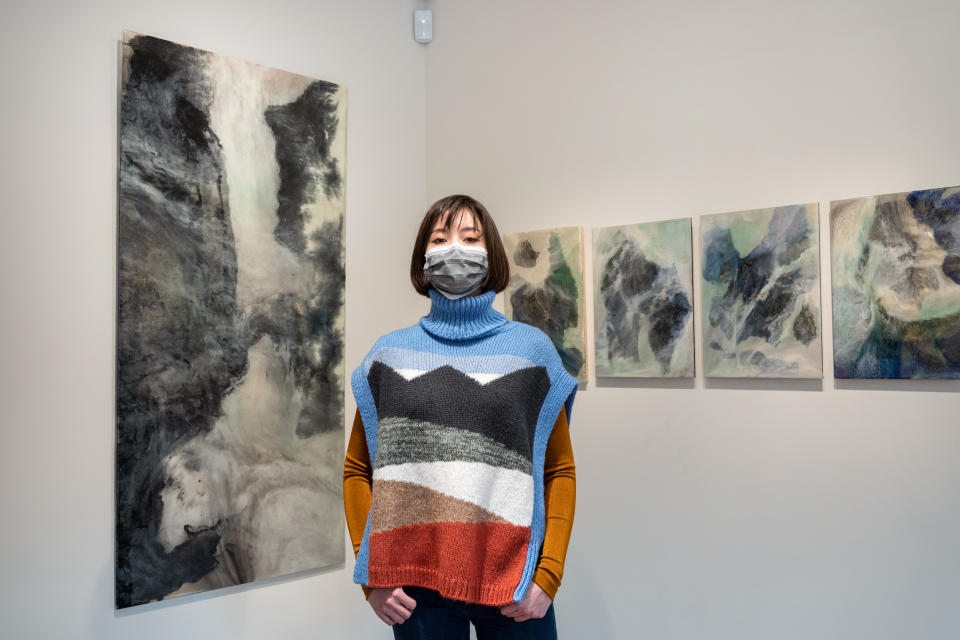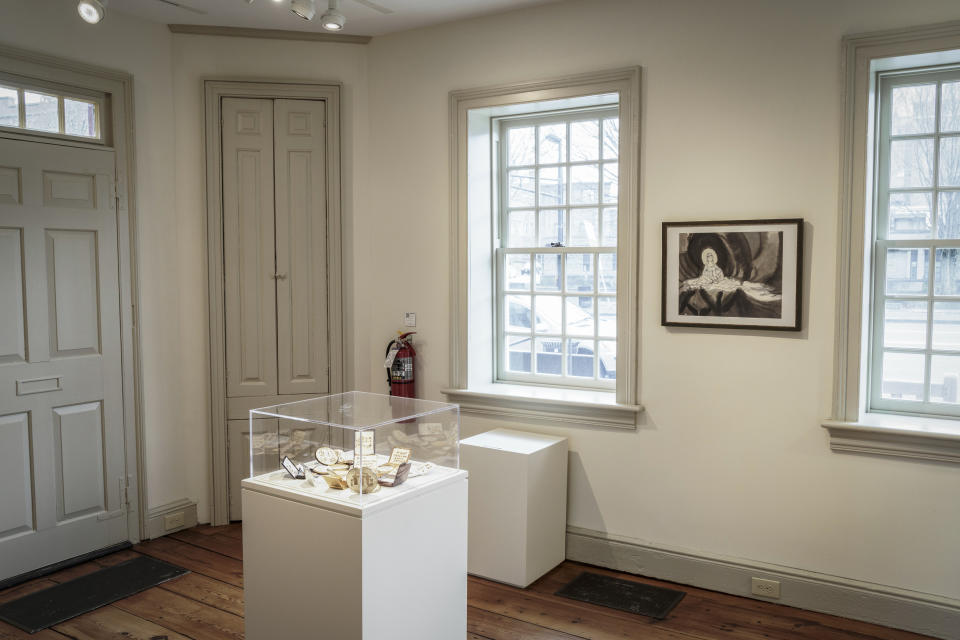Artist's makeup mirror exhibit symbolizes Asians looking over shoulder in subway
Artist Kelly Wang was 6 years old when two of her schoolmates told her they “want to kill all the Chinese people.”
Today, 29-year-old Wang carries a mirrored makeup compact when out in New York City, where she lives and works — not to touch up her appearance, but to subtly check behind her shoulder on a subway platform at night.
As anti-Asian violence rose in 2020, the artist began putting together a collection of compacts carrying messages to tell her story. The resulting installation, titled “Thank You for Reminding Me of My Rich Cultural Past,” is on display at Princeton University Art Museum until Feb. 27.
The piece is part of one of four galleries featured in the show, which exhibits works ranging from burnt calligraphy pieces to a Chinese garden rock sculpted out of rolled-up newspaper pieces, which was created in honor of her late father, who received daily newspaper deliveries before dying of Covid-19 in 2020.
“Thank You for Reminding Me of My Rich Cultural Past” aims to relay a shared Asian American experience that, to Wang, seems to amplify the “Asian” and forget the “American.”
“But, where are you from, originally?”
“We want to kill all the Chinese people.”
“Please take the next elevator.”
In creating the piece, she burnt comments like these, all of which Wang said she has been on the receiving end of, into traditional Chinese xuan paper. She displays them on top of compact mirrors, allowing parts of the mirror to peek through.

She said besides symbolizing looking over one’s shoulder, the mirrors take on another meaning.
“The feeling of these words and the impact they have on your experience, it’s almost like being burnt. It transforms the vision that you have of yourself,” Wang said. “But you can also transform your response to that image, so it’s not like the text has to be completely obscuring how you view yourself.”
Curator Cary Liu said in an email that the museum initially aimed to explore Wang’s artistic connection with her heritage.
“Working closely with Kelly, however, revealed underlying tensions in being caught between cultural traditions, or in dealing with the loss of a parent,” Liu said. “The trajectory of the work is compelling, and our job was to get out of the way and let Kelly and her art speak for themselves.”
Wang said she used compacts ranging from contemporary designer brands to vintage designs as she imagined the variety of women who might all sneak a look over their shoulder when standing alone in the city.
Personal safety weighed heavily on the minds of Asian Americans when Wang started working on the installation two years ago, at the height of the pandemic’s first wave, and it remains just as salient a concern for her now. On the day Wang’s art show opened at Princeton last month, an attacker pushed 40-year-old Michelle Go to her death in front of a New York subway train.
As the arrival of Covid-19 spurred a wave of xenophobia and racism against Asian and Asian-passing Americans, Wang said some residents in her apartment building began refusing to let her on the elevator even when they were the only person inside, meaning it hadn’t yet filled its recommended social-distancing capacity.

Some comments on the compacts stem from a much longer history of perpetual foreignization. Wang, who was born and raised in New York City, would often field questions about where she was from.
“And if I say, ‘Well, I’m from New York,’ they’re like, ‘No, but where are you from originally?’” she said. “Like, OK, so you want to know, what’s my background? What’s my ethnicity?”
But the hateful words on some mirrors are accompanied by other mirrors displaying images of bamboo paintings and calligraphy, representing the Chinese culture Wang said she only embraced when she began taking ownership of her ethnic background.
“Before I had these experiences, I wasn’t really forced to be interested in or to even recognize my own different origins, the fact that I have this past,” she said. “So even though these comments were very painful initially, ultimately they led me to do a lot of deeper self-exploration. I never wanted to be hiding from who I really am.”
For Wang, expression through art is one way for Asian Americans to speak up. Few artistic works center around anti-Asian racism, she said, and many within the community still keep quiet about their trauma and history.
As much as her exhibit helps tell their story, she said it also raises questions about the identity they share.
“I think a lot about the term ‘Asian American’ and whether that’s even something that people call themselves until they face the responses to their existence from the outside world,” Wang said. “Because I always thought of myself as an American, and there is no American race.”

